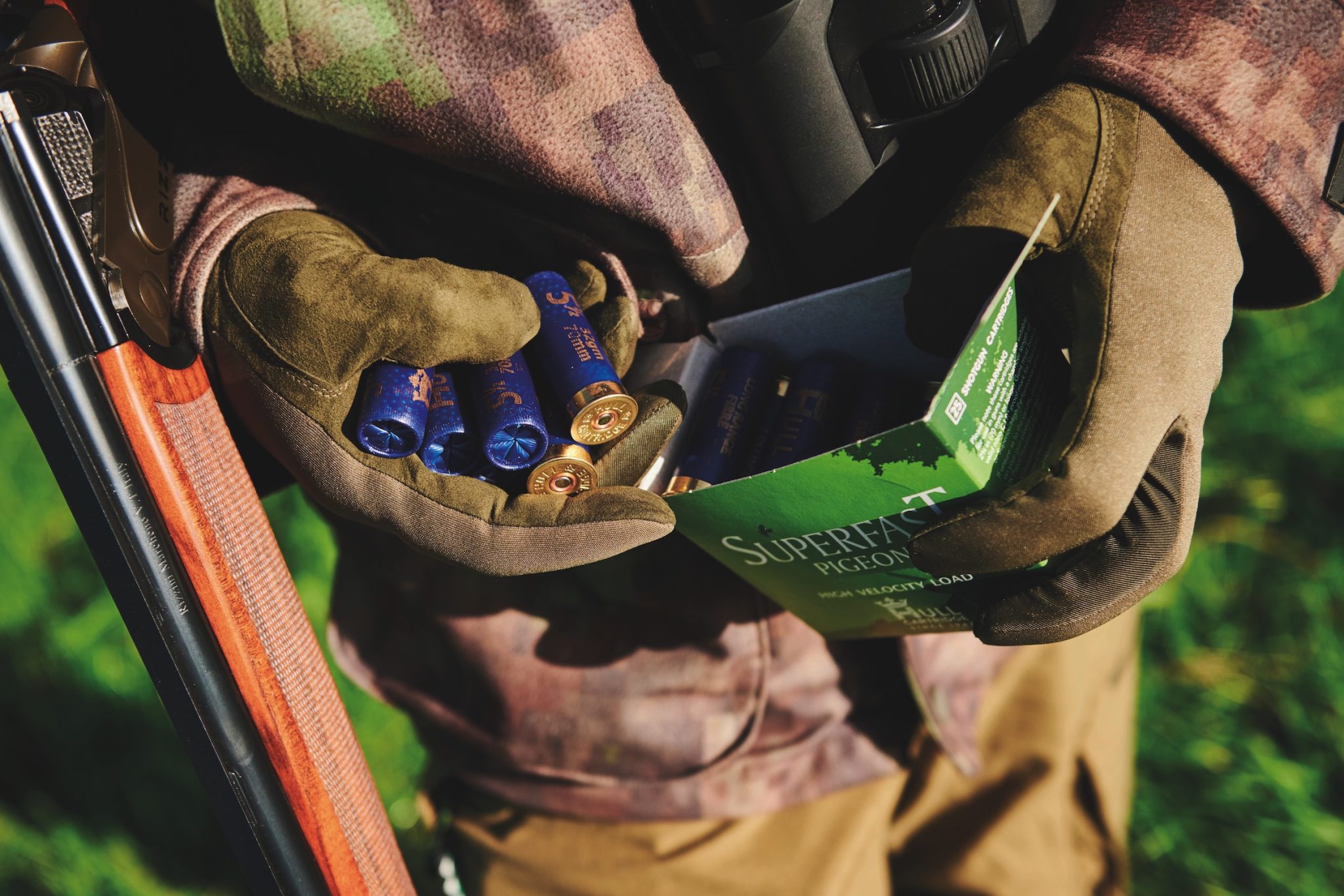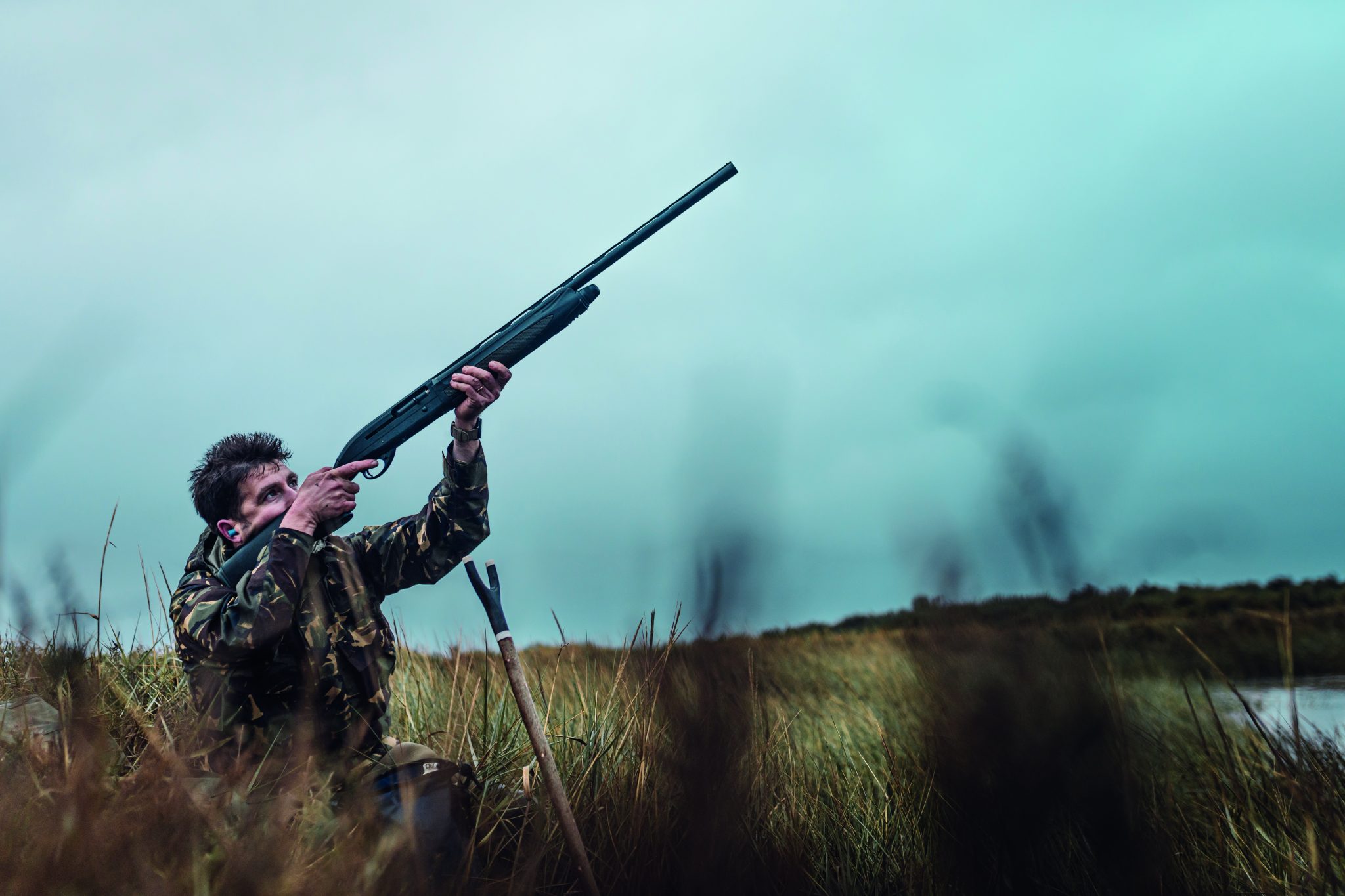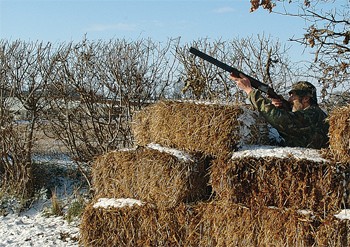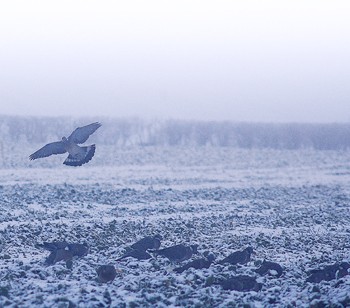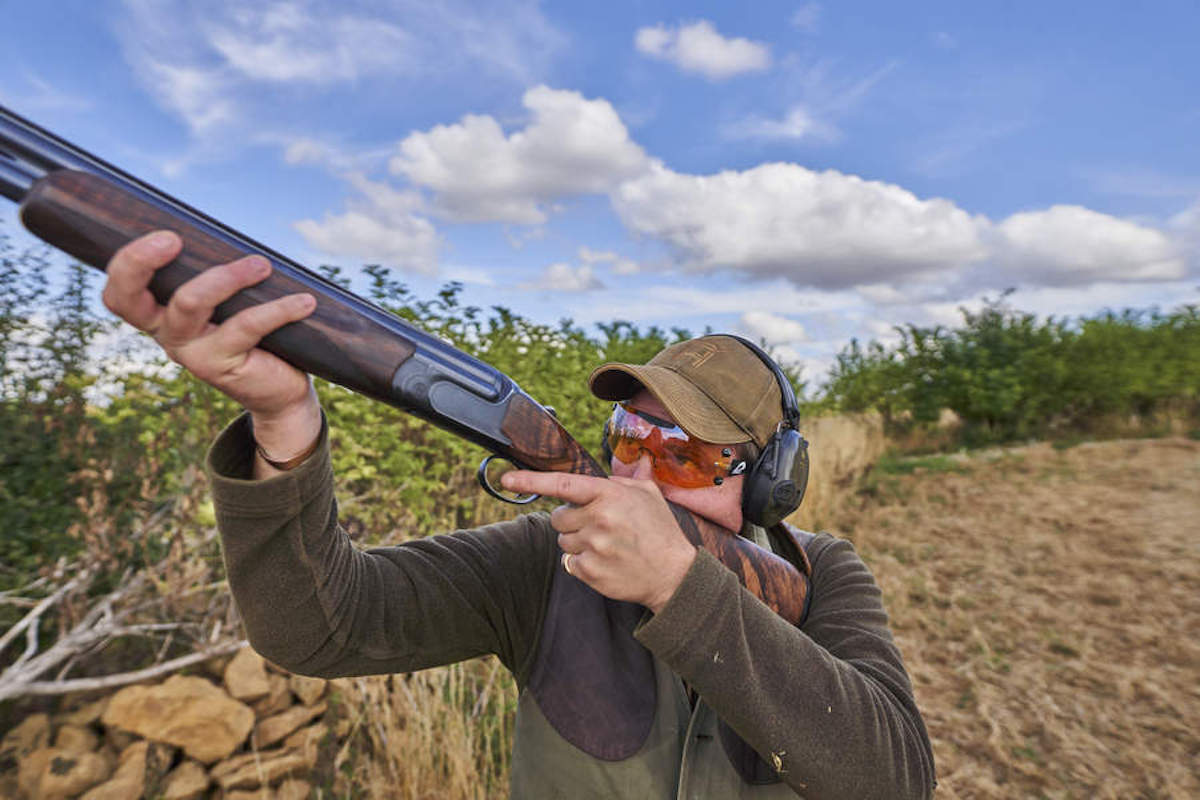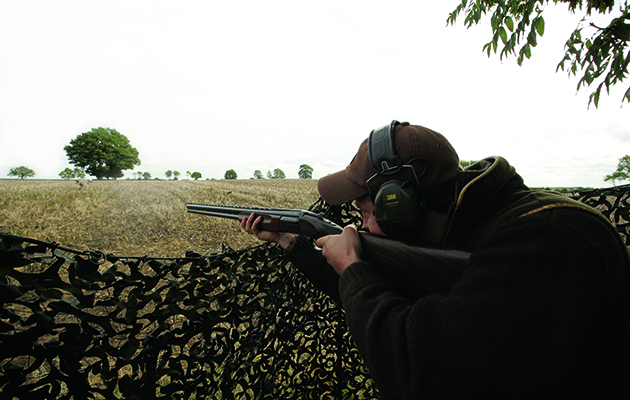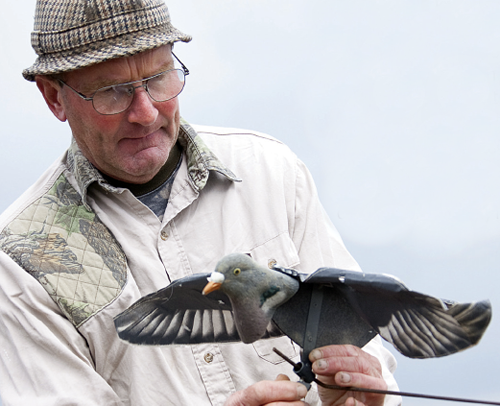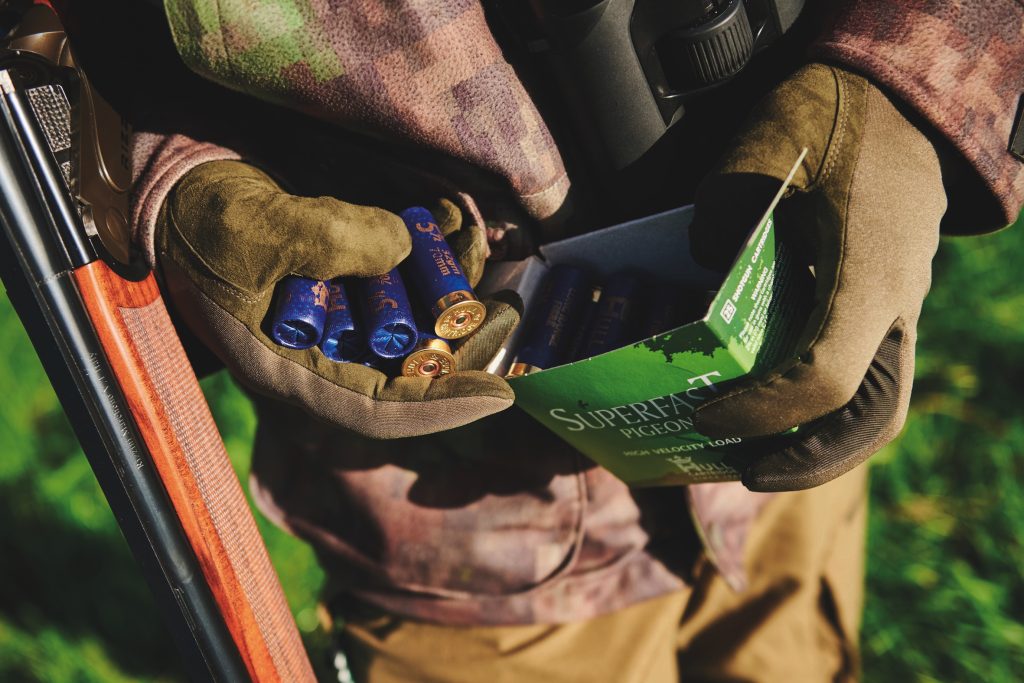Shotguns and cartridges for pigeon shooting It’s taken me a few years to discover the best shotguns and cartridges for…
Win CENS ProFlex DX5 earplugs worth £1,149 – enter here
Secrets of successful winter pigeon shooting
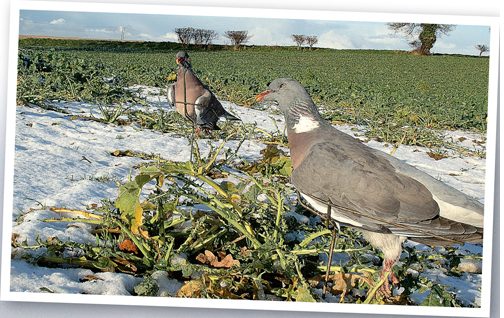
Due to the mild weather, this year’s autumn drillings went well, the best they have for a few years — it was more like shooting over spring drillings. With the new farming schemes, there have been a lot of over-wintered stubbles, which is encouraging, and mustard has been the crop of choice for the green cover crop schemes in place. I’m undecided about the wild harvest. Some counties have a heavy acorn crop and others almost nothing. It is interesting to see such a difference and I can only put it down to weather.
Hard winters put pressure on pigeons to feed
Though enjoyable, winter shooting can test your sanity. A lot of the winter rape in my area has really kicked on, with few bare patches. Pigeon are not a fan of tall rape and prefer to feed on the shorter rape. Keep a lookout for any field that may be slow or struggling because they will be the fields to get hit. As pigeon shooters, we rely on hard winters putting the pressure on birds to feed on agricultural crops. The harder the winter, the more pigeon will feed to keep energy levels up.
October and November are difficult months for decoying. Birds can behave erratically, as if they have been shot at a lot. I put this down to the start of the shooting season; if the pigeon are in a big shooting area, six days a week of banging around will make them very jumpy. It can take time for them to settle.
Pigeon density is low
The pigeon population seems very dispersed across the country. I’m not despondent because I know that they have bred prolifically and the national population is high across the country, but density is low. This is mainly due to widespread food sources and the long period of warm weather, which has been favourable to the woodpigeon and has left them in great condition. Of all the seasons, winter pigeon shooting is without doubt the hardest time to control pigeon populations. There are many factors for this and to shoot good bags you have to be at the top of your game.
Wind vital for successful winter day
As birds flock, on still days they will travel as one, and these are not the days to go out. Wind is vital for a successful day during the winter: a good wind but not too strong is needed to break the flocks up and keep them moving through the day.
On a clear, cold and windy day decoys stand out brilliantly with the sun on their backs. On dull days, their visibility can be consumed by the deep green of winter rape, but I don’t get too worried about it being overcast.
As a rule of thumb, west is best, but with a westerly wind does come the risk of wet weather ruining the day. Easterly winds are fine but do make sure you wear plenty of warm clothing, as it will be cold. It is imperative that you get conditions spot-on for the day, otherwise it will be time wasted.
Reconnaissance and flight lines
A common mistake made by pigeon shooters is that they become obsessed with big flocks on the floor. Worry about birds in the air, not on the floor. You have to be under or as close to the line as possible or your time will be wasted. Most importantly, don’t fall for false lines. A false line is when birds are travelling from nearby sitty trees to a field. A true line is birds coming from distance. You must establish this true line. During the winter, I prefer to let the birds find the field first, have a first feed, and then I walk them off. This gives them confidence with their chosen field and helps them commit second time out.
On a cold night birds will be out at first light to feed and replenish energy levels, but I don’t feel the need to be out there with them. Give them a chance and you will have a better day. It can be short and sharp as it will be a short feeding day. If conditions are right and the wind splits the flock, you will in most cases shoot from around 10am to 2pm at the latest. Birds will be thinking about roosting after this and it will give them a chance to calm down before they settle to roost.
Pigeon fieldcraft
Fieldcraft is so important. Unlike the spring and summer months, when birds are easier to manage due to small packs or singles and pairs, in winter you are dealing with larger numbers, and a greater number of eyes all ready to alert their friends to any danger.
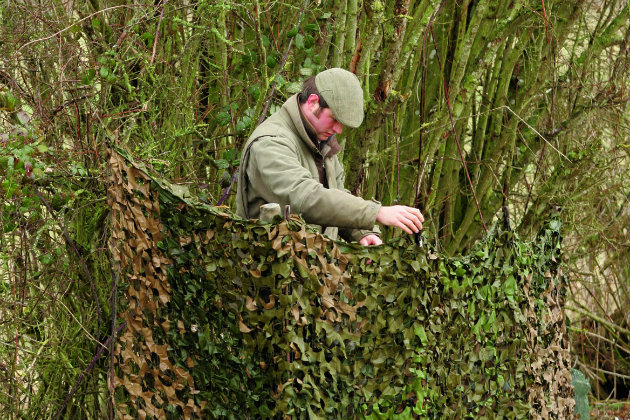
Your hide must be well brasher-up so that it doesn’t stand out
Hides must be built well to conceal any movement, and limited or no vegetation will mean that your hide will stand out clearly. Brashing-up your hide is essential and you must make sure it blends in well. A poorly built box hide with dark colours or one that has not been brashed-up well will stand out from a great distance.
Managing your ground during the winter months
You must make a decision on how best to manage your ground during the winter months. If you choose to decoy, split up your outings. If you decoy too heavily birds will become educated and quickly become decoy-shy. If you choose to roost shoot, again split up your outings. Decoying and roosting in general will never work together because the pigeon population will become incredibly jumpy and you will have limited success at both.
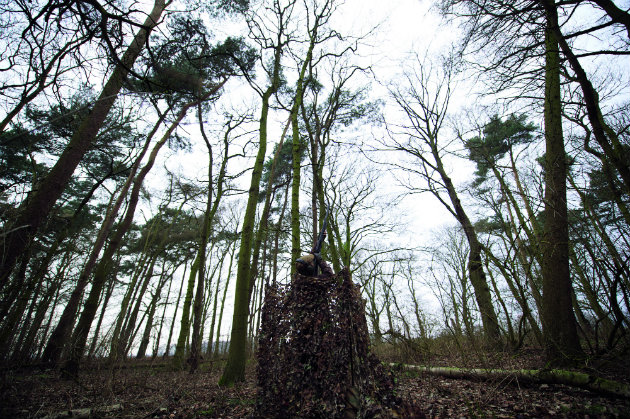
Don’t try to roost shoot as well as decoying: your birds will become jumpy
The challenge of winter shooting
Winter pigeon shooting requires so much discipline. If you are decoying, don’t under any circumstances shoot at big flocks. Shooting at big numbers will only alert birds to danger. You may kill two but you will educate more and ruin any chance of building a bag.
This is another reason why wind is vital — so that flocks break up and you conceal your shot. Ideally, you shouldn’t shoot if there are more than 15 birds. The same applies for roosting and flighting pigeon.
I really enjoy the challenge of winter shooting. Don’t get frustrated, because you need everything to be right to make the most of an outing. If you can be disciplined and shoot on the days that you know you will be of more benefit in controlling numbers you will have more success. Good luck.
Tom’s top five tips for winter pigeon shooting
- Wind and weather have a huge part to play. Wind breaks big flocks and will enable you to build a bag from arriving birds. If the weather is wrong, don’t shoot.
- As always reconnaissance is so important. Establish the true flightline to the chosen field. If you fall for a false line you will end up in the wrong place and the day will be a non-starter. I prefer to let birds have their first feed because it gives them confidence. Make sure you walk the birds off properly before you start shooting.
- Cover is limited in the winter months so build a good hide that fits your surroundings and take time getting it right. Remember that you are dealing with a lot of birds with exceptional eyesight.
- Don’t over-shoot your ground or you will educate birds and decoying will become impossible.
- Be disciplined with your shooting and don’t shoot at big flocks.
Top tips for a successful pigeon shooting technique
I am so fortunate to be out and about shooting pigeon all the time. I’ve had the privilege to learn from some of…
Pigeon shooting: 6 pieces of kit you won’t want to be without…
Pigeon shooting expert, Peter Theobald, runs through his list of ‘must have’ decoying accessories.
Related Articles
Get the latest news delivered direct to your door
Subscribe to Shooting Times & Country
Discover the ultimate companion for field sports enthusiasts with Shooting Times & Country Magazine, the UK’s leading weekly publication that has been at the forefront of shooting culture since 1882. Subscribers gain access to expert tips, comprehensive gear reviews, seasonal advice and a vibrant community of like-minded shooters.
Save on shop price when you subscribe with weekly issues featuring in-depth articles on gundog training, exclusive member offers and access to the digital back issue library. A Shooting Times & Country subscription is more than a magazine, don’t just read about the countryside; immerse yourself in its most authoritative and engaging publication.



